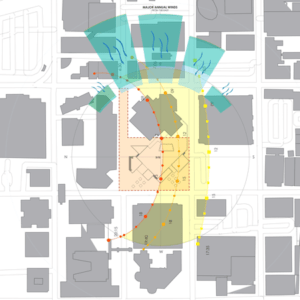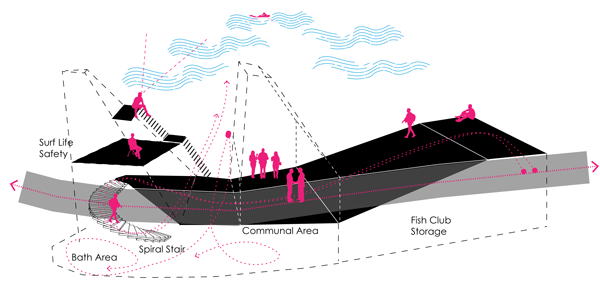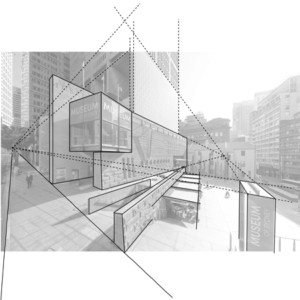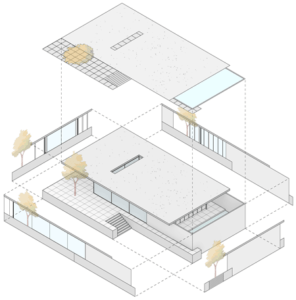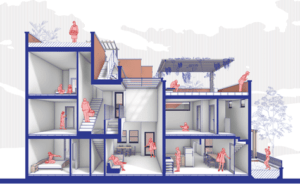Best Workflow for Design Studio Projects
Architecture school studio projects are design assignments or exercises that architecture students work on in a studio setting. These projects are typically part of an architecture curriculum and are intended to help students develop their design skills, critical thinking, and creativity. Studio projects typically involve designing a building, space, or environment, and may range from small-scale, theoretical projects to larger, more complex projects that incorporate real-world constraints.
In the studio setting, students typically work under the guidance of an instructor who provides feedback and critiques their work. Studio projects also provide students with the opportunity to collaborate with their classmates and to learn from each other.
The primary goal of studio projects is to provide students with a hands-on learning experience that helps them understand the design process, from initial conceptualization to final documentation. Through the completion of these projects, students develop the skills they need to become successful architects, including problem-solving, communication, teamwork, and technical skills.
Architecture studio projects are an integral part of architecture education, and are designed to prepare students for the challenges and opportunities of professional practice. They provide students with the opportunity to apply the theories and concepts they have learned in the classroom to real-world design challenges.
Advantages of Studio Projects?
Studio projects offer several advantages over real-world projects:
Flexibility: University design projects provide students with the freedom to explore and experiment with different design ideas without the constraints of real-world limitations such as budget, time, and building codes.
Learning Opportunity: Design projects in university provide students with the opportunity to learn and develop their skills in a safe and supportive environment, without the pressure of real-world consequences.
Feedback: In university design projects, students receive regular feedback and critique from instructors and classmates, which helps them improve their design skills and receive a better understanding of the design process.
Exposure to a Wide Range of Project Types: University design projects expose students to a wide range of project types, scales, and design methodologies, providing them with a broad base of knowledge and skills.
Emphasis on Process: University design projects emphasize the design process and encourage students to think critically and creatively, rather than just focusing on the end product.
Focus on Personal Growth: University design projects are focused on personal growth and development, allowing students to grow and evolve as designers.
Low Risk Environment: In a university setting, students have the opportunity to make mistakes and learn from them without the high stakes of real-world projects.
While university design projects have many advantages, it is important for students to also understand the limitations of these projects and be aware that the real-world design process is often more complex and challenging. Nevertheless, university design projects provide a valuable foundation for future real-world design projects.
Best Workflow for Studio Projects?
The best workflow for design projects in an architecture school will vary depending on the specific requirements of the project, the tools and resources available, and the preferences of the individual students and instructors. However, a general and widely adopted workflow for design projects in architecture school is as follows:
Program Analysis and Research: This stage involves understanding the project requirements and conducting research to inform the design process. This may include a site analysis, stakeholder consultation, and gathering of reference materials. One can use Illustrator to create analytical diagrams of precedent projects, site analysis, program zoning, etc.
Concept Generation: This stage involves exploring different design concepts through sketches, models, and other visual aids. The goal is to develop a range of ideas that can be evaluated and refined. Students can experiment with Rhino3D massing models, physical block models, hand sketches, photoshop collages and so on.
Concept Development: In this stage, the most promising concepts are developed in more detail through further sketches, models, and computer-aided design (CAD) tools. The goal is to arrive at a clear and well-defined design solution with drawings like plans, sections, elevations, axo or 3D perspective views. Students can use Rhino3D, Revit, SketchUp, AutoCAD or ArchiCAD for this. I would suggest that based on the scale of project and the level of detailing, one must select a software at this stage.
Design Refinement and Documentation: This stage involves refining the design solution and preparing the necessary documentation, including drawings, specifications, and schedules. This includes further detailing which is continuation from previous concept development. Students must continue with their chosen software tools to create detailed drawings for their designs.
Critique and Feedback: This stage involves presenting the design solution to the instructor and classmates for critique and feedback. This is an important opportunity to receive constructive criticism and refine the design solution.
Final Presentation: This stage involves preparing a final presentation of the design solution, which may include drawings, models, images, and a written report. I highly recommend my students to use Adobe InDesign to prepare their presentation panels and slides for individual submission or else Google Slides for group presentation. Students must also pay attention to the vocal presentation as it should be completed within a specified time duration.

“Unlock your full potential as a future architect and take your design skills to the next level with private tutoring on studio projects. With personalized attention and guidance from an experienced instructor, you’ll learn the best practices and techniques for successful design, and gain valuable hands-on experience that will set you apart in the competitive world of architecture. Don’t settle for a mediocre education – invest in yourself and your future, and sign up for private tutoring on studio projects today!”

